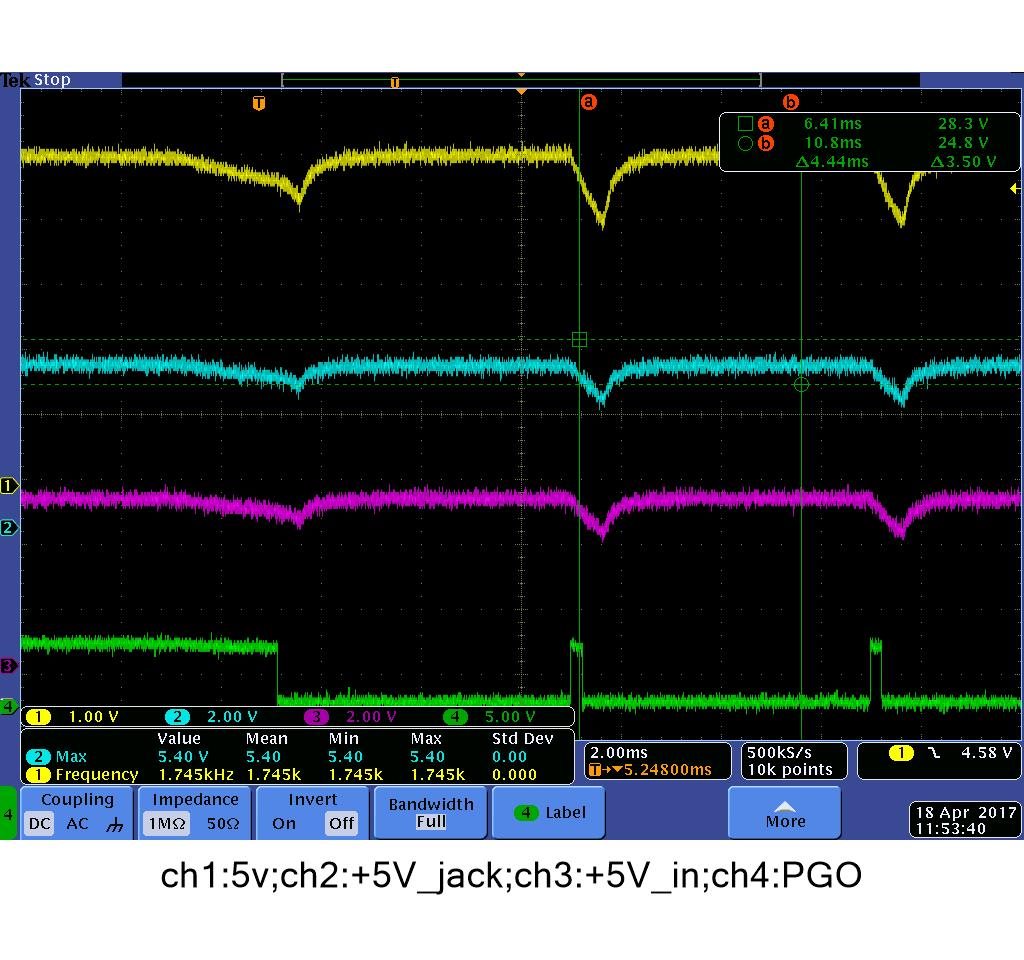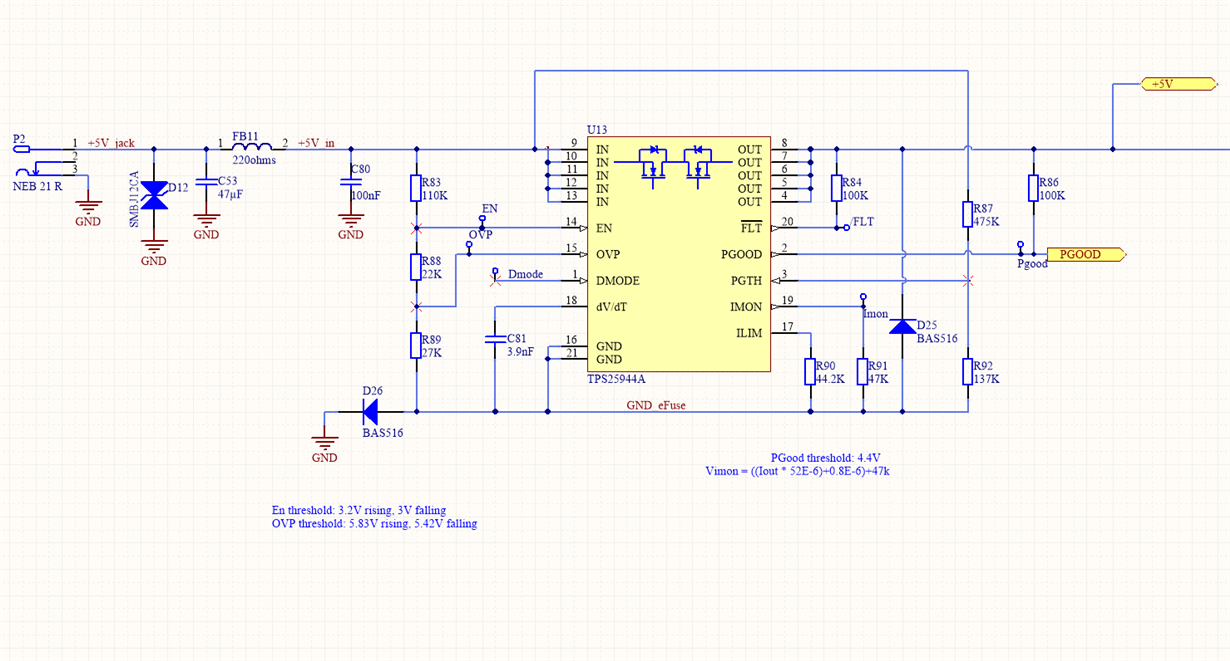Other Parts Discussed in Thread: TPS25944A
Hi,
My customer has a question.
This is written in the data sheet.
[The TPS25942, TPS25944 monitor V(IN) and V(OUT) to provide true reverse blocking from output when V(IN) <(V(OUT) – 10 mV).]
But,
After checking the operation,
Following the rise in VOUT, VIN was also rising.
Is this correct behavior?
The customer is using the circuit of Figure 87.(Datasheet P44)
Best Regards,
Watanabe



